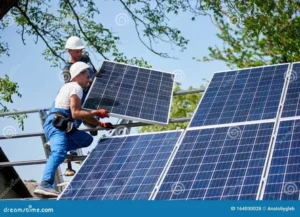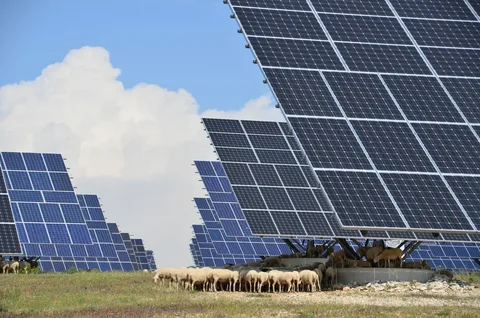As the world grapples with the challenges of climate change, energy independence, and rising utility costs, one solution shines brighter than the rest: harnessing the power of the sun. Stand alone solar, also known as off-grid solar systems, offer a revolutionary way to generate clean, renewable energy free from the constraints of traditional grid connections. With the ability to provide electricity in remote locations, power critical infrastructure, and even fuel entire communities, stand-alone solar systems are transforming the way we think about energy production and consumption.
Benefits of Stand-Alone Solar Systems
One of the most significant advantages of stand-alone solar systems is their ability to provide independence from the grid. With a stand-alone system, you are no longer reliant on the utility company to power your home or business, giving you freedom from the fluctuations of electricity prices and the unpredictability of power outages. Additionally, stand-alone solar systems offer a sense of security and peace of mind, knowing that you have a reliable source of energy that is not dependent on external factors.
Furthermore, stand-alone solar systems can significantly reduce your carbon footprint, making them an environmentally friendly option for those looking to reduce their impact on the planet. Not only do they produce clean energy, but they also require minimal maintenance and have a long lifespan, making them a cost-effective option in the long run.
Moreover, stand-alone solar systems can be designed to meet specific energy needs, making them versatile and flexible solutions for various applications. Overall, stand-alone solar systems offer a unique combination of energy independence, environmental sustainability, and cost-effectiveness, making them an attractive option for those looking to harness the sun’s power.
Components of a Stand Alone Solar System
At the heart of a stand alone solar system lies a carefully orchestrated ensemble of components, each playing a vital role in harnessing the sun’s power and converting it into usable energy. The first and most crucial component is the solar panel array, which converts sunlight into electrical energy through photovoltaic cells. These panels are typically mounted on a roof or solar array and are designed to maximize energy output while withstanding the elements.
Next, the charge controller regulates the energy flow from the solar panels to the battery bank, ensuring that the batteries are charged safely and efficiently. The battery bank is a critical component, storing excess energy generated during the day for use during periods of low sunlight or at night.
An inverter is then used to convert the stored DC power into usable AC power, making it compatible with household appliances and electrical systems. Finally, a monitoring system provides real-time data on its performance, allowing users to track energy production and optimize their system for maximum efficiency. Combined, these components form a seamless and reliable stand-alone solar system capable of providing power independence and energy self-sufficiency.
Applications and Use Cases for Stand Alone Off Grid Solar Systems
Stand Alone off Grid Solar systems offer a versatile and reliable solution for harnessing the sun’s power, and their applications are vast and varied. From remote areas to urban landscapes, these systems can be used in various scenarios, providing electricity independence and reducing our reliance on fossil fuels.
Rural Communities and Off-Grid Homes
In rural areas where traditional grid electricity is scarce or non-existent, stand-alone solar systems provide a lifeline for communities and homes. These systems can power entire villages, homes, and farms, enabling people to access basic amenities like lighting, communication, and healthcare.
Camping and Outdoor Adventures
For outdoor enthusiasts, stand-alone solar systems are a game-changer. They can power camping equipment, charge batteries, and provide a reliable energy source for remote adventures. Whether you’re a camper, hiker, or RV enthusiast, these systems ensure you stay connected and powered up, no matter where your journey takes you.
Agricultural and Farming Applications
Stand-alone solar systems can power irrigation systems, farm equipment, and livestock monitoring systems, enabling farmers to increase their productivity and reduce energy costs. With the ability to power water pumps, farm lighting, and other essential equipment, these systems are vital to modern agricultural practices.
Disaster Relief and Emergency Response
In the aftermath of natural disasters, stand-alone solar systems can provide a critical power source for emergency responders, relief efforts, and affected communities. These systems can be quickly deployed to provide lighting, communication, and power for essential services, helping to restore order and facilitate recovery.
Scientific Research and Remote Monitoring
In remote and inhospitable environments, stand-alone solar systems enable scientists to conduct research, collect data, and monitor environmental conditions. These systems can power sensors, cameras, and other equipment, allowing researchers to gather valuable insights and make groundbreaking discoveries in climate science, ecology, and astronomy.
Designing and Installing a Stand-Alone Solar System: Essential Considerations and Best Practices
When designing and installing a stand-alone solar system, there are several essential considerations and best practices to remember. First and foremost, it’s crucial to assess the site’s energy requirements and determine the system size needed to meet those demands. This involves calculating the total wattage of the appliances and devices that the system will power and considering factors such as shading, temperature, and energy storage needs.
Next, it’s important to select high-quality components, including solar panels, inverters, charge controllers, and batteries, designed to work together seamlessly. The mounting and tracking system must also be carefully considered to ensure maximum energy harvesting.
Additionally, the installation process requires careful planning and execution, including proper wiring, grounding, and testing to ensure the system is safe and efficient. Finally, ongoing maintenance and monitoring are critical to ensure the system operates at peak performance and identify potential issues before they become major problems. By following these essential considerations and best practices, individuals and organizations can successfully design and install a stand-alone solar system that meets their energy needs and reduces their reliance on the grid.
 Features of the Best Stand Alone Solar-System
Features of the Best Stand Alone Solar-System
When it comes to harnessing the sun’s power, the best stand alone solar system is a reliable and efficient option for generating electricity, especially in areas where grid connectivity is challenging. These systems are designed to operate independently, providing a sustainable energy source for homes, cabins, and remote locations. Here are some key features of stand-alone solar systems:
Autonomy and Independence
Stand-alone solar systems are designed to operate independently of the grid, providing a reliable source of electricity even in areas where grid connectivity is limited or unavailable. This makes them ideal for remote locations like cabins, farms, and rural homes.
Renewable Energy Source
Stand-alone solar systems harness the sun’s power, a renewable energy source, to generate electricity. This reduces our reliance on fossil fuels and minimizes our carbon footprint, making it a clean and sustainable option for energy generation.
Modular and Scalable Design
Stand-alone solar systems are designed to be modular and scalable, allowing you to add or remove components as needed. This makes upgrading or expanding your system easy to meet changing energy demands.
Low Maintenance and Durable
Stand-alone solar systems are designed to be low maintenance and durable, with a lifespan of up to 25 years or more. Once installed, you can enjoy a reliable energy source with minimal upkeep and maintenance costs.
Customizable and Versatile
Stand-alone solar systems can be customized to meet specific energy needs, from small cabins to large homes and commercial applications. This versatility makes them an ideal option for various applications, from lighting and refrigeration to powering entire homes and businesses.
Tips to Maintain 5kw Stand Alone Solar System
Regularly Inspect Your System
Regular inspections are necessary to ensure your 5kw Stand Alone Solar System is running at its best. Check your system at least once a month to identify any potential issues before they become major problems. Look for signs of wear and tear, such as loose connections, damaged wires, or dirty panels. Catching these issues early can prevent unexpected downtime and costly repairs.
Monitor Your System’s Performance
Keep track of your system’s performance by monitoring its energy output, voltage, and current. This will help you identify any potential issues and make adjustments as needed. You can use a monitoring system or a data logger to track your system’s performance and receive alerts if any issues arise.
Perform Routine Maintenance
Perform routine maintenance tasks, such as checking and replacing batteries, to ensure your system runs efficiently. Check your battery water levels, clean the terminals, and replace batteries. Also, check your system’s grounding and bonding to ensure it’s safe and functioning properly.
Keep Your System Up-to-Date
Finally, keep your system up-to-date by installing software updates and new features as they become available. This will ensure your system is running with the latest technology and taking advantage of any improvements in efficiency and performance. Stay informed about the latest developments in solar technology and take advantage of opportunities to upgrade your system.
Conclusion
As we bid farewell to the era of fossil fuels and embark on a journey towards a sustainable future, stand-alone solar systems emerge as a beacon of hope. With the ability to generate clean, renewable energy, these systems empower individuals and communities to take control of their energy needs, free from the shackles of grid dependency. By harnessing the sun’s power, we can illuminate our homes, power our appliances, and fuel our daily lives, all while reducing our carbon footprint and mitigating the devastating effects of climate change. As we look to the future, it’s clear that stand alone solar systems will play a vital role in shaping a brighter, more sustainable tomorrow.
FAQ’S
As you consider harnessing the sun’s power with a stand-alone solar system, you may have questions about how it all works. Here are some answers to some of the most common questions:
Q: How long do stand-alone solar systems last?
Stand-alone solar systems can last for many years, with a typical lifespan of 20 to 30 years or more. The lifespan of your system will depend on the quality of the components, the amount of maintenance it receives, and the environmental conditions it is exposed to.
Q: Can I use a stand alone solar system to power my home?
Yes, it is possible to use a stand-alone solar system to power your entire home, but it will depend on your system size and energy needs. A larger system with more solar panels and a larger battery bank will be able to power more of your home’s appliances and lights.
Q: Are stand-alone solar systems expensive to install?
The cost of installing a stand-alone solar system can vary widely, depending on the system’s size and the components’ quality. While the initial installation cost may seem high, these systems can save you money in the long run by reducing your reliance on the grid and providing free energy from the sun.
| Other Good Articles to Read |
| skank blogs |
| unreal blogs |
| tba blogs |
| all city forums |
| dany blogs |
| refuge blogs |
| the music blogs |
| key forums |
| the big blog theory |
| joe blogs |
| blogs 4 me |
| Blogs Emon |
| Related Business Listings |
| Contact Directory |
| Local Business Profiles |

